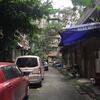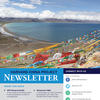Transportation & Urban Planning
Winter 2021 Newsletter
. 2021. “Seasonal variations of park visitor volume and park service area in Tokyo: A mixed-method approach combining big data and field observations.” Urban Forestry & Urban Greening, 58, March, Pp. 126973. Publisher's VersionAbstract
Traffic Pollution Policies Save Hundreds of Thousands of Lives in China
. 2021. “Built environment and self-rated health: comparing young, middle-aged, and older people in Chengdu, China.” Health Environments Research & Design Journal, 144, 3, Pp. 229-246. Publisher's VersionAbstract
HCP Recent Publications
. 2020. “Health benefits of on-road transportation pollution control programs in China.” Proceedings of the National Academy of Sciences, 117, 41, Pp. 25370-25377. Publisher's VersionAbstract
HCP Researcher Profile: ChengHe Guan
HCP Research Brief: Influence of Urban Form on Active Transport in Chengdu China
. 2020. “The influence of urban form and socio-demographics on active transport: a 40 neighborhoods study in Chengdu, China.” Journal of Transport and Land Use, 13, 1, Pp. 367–388. Publisher's VersionAbstract
Spring/Summer 2020 Newsletter
HCP Q&A: Faan Chen on "Driving and the Built Environment"
. 2019. “Walking culture in China.” Harvard Graduate School of Design.
Thesis Type: D. Des dissertation.. This dissertation analyzes data from the Harvard-China Project's household survey in Chengdu, Sichuan.
. 2018. “Two-stage optimal scheduling of electric vehicle charging based on transactive control.” IEEE Transactions on Smart Grid, 10, 3, Pp. 2948-2958. Publisher's Version
. 2020. “The influence of neighborhood types on active transport in China’s growing cities.” Transportation Research Part D: Transport and Environment, 80, 102273. Publisher's VersionAbstract








